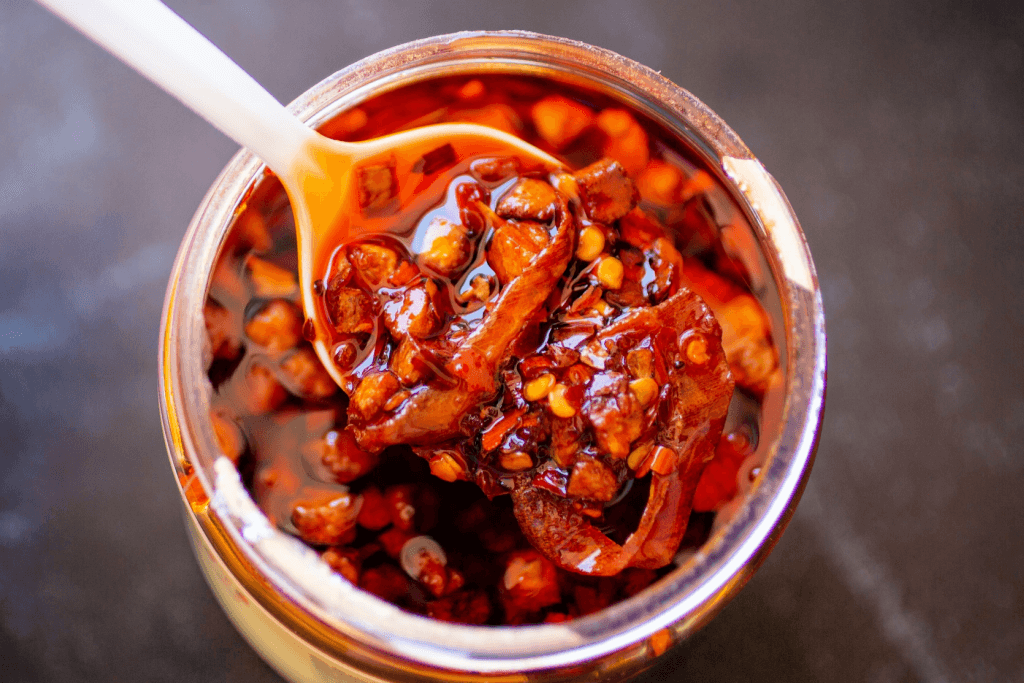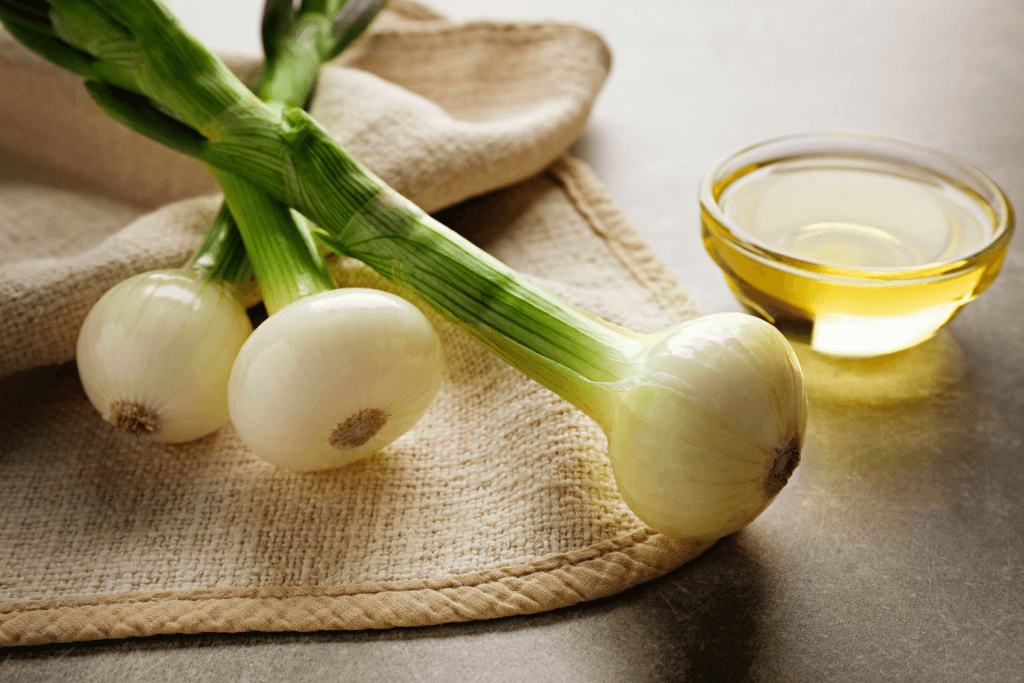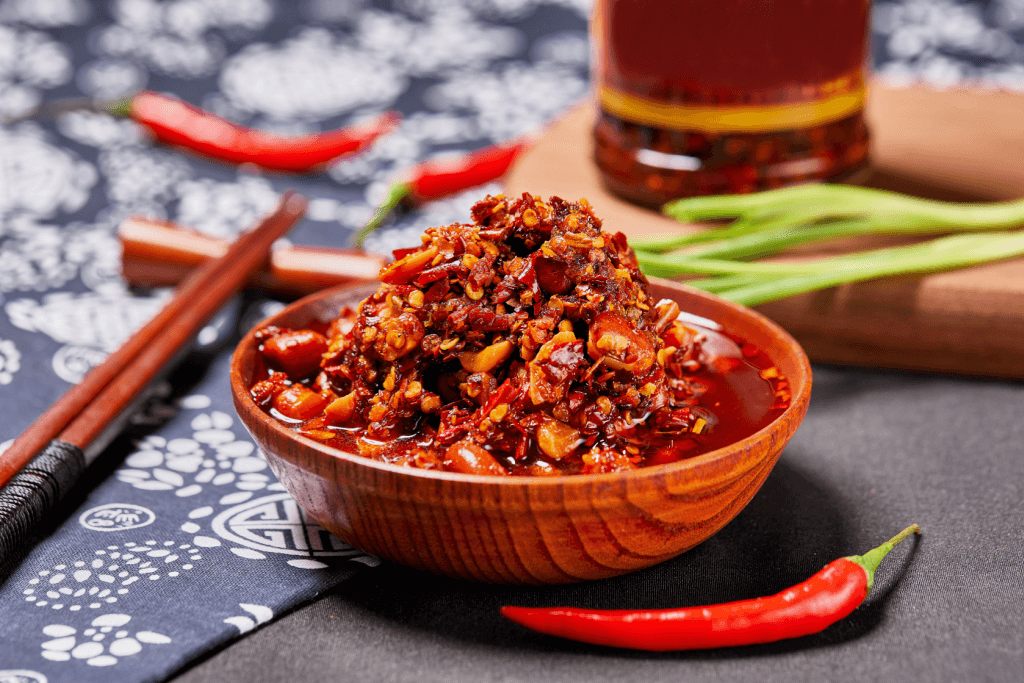Spices have been essential trade commodities since ancient times. Today, a vast array of condiments makes dining an exciting experience. Japanese cuisine, in particular, features some of the world’s most popular and celebrated seasonings and condiments. From Galangal root to fiery chili oil, these ingredients contribute to the richness of flavors. Only a few oil-based condiments are available in Japanese cuisine for those itching to try something new.
Table of Contents
ToggleChili Oil
Intimidating to many but beloved by many more, chili oil is a condiment popular throughout much of Asia. As its name suggests, chili oil is vegetable oil infused with chili peppers. The preparation of chili oil varies across countries. Typically, hot oil is poured over chopped red chili peppers. It’s called rayu in Japan and may contain additional ingredients like ginger or paprika.

Although spicy, it’s rarely scorching. The smooth oil coats food evenly, giving it a striking heat and shine. An excellent example is miso udon, where thick noodles capture the fiery oil, and the miso-mushroom combination balances the heat. Add garlic, sesame, or other veggies for extra flavor; chili oil pairs well with hearty noodle dishes.
Sesame Oil
Sesame oil is one of the more challenging oils to manufacture. It is a highly valuable cooking oil throughout the Middle East and Asia. Sesame oil comes from the sesame seed. What makes sesame oil particularly challenging to harvest is the process of dehiscence, or when the capsule that protects the sesame seed bursts due to becoming ripe. As a result, the oil extract has a pleasing brown color and earthy scent.

The flavor of sesame oil can range from mellow to intense, depending on the variety of oils in production. Sesame oil is suitable for deep-frying foods but burns quickly and can become bitter. It is also prone to becoming rancid if left out in the open for too long, so refrigeration is recommended. If you take the proper precautions when cooking with sesame oil, you can expect it to add a rich and warm flavor that complements your meal.
As sesame oil is a versatile cooking ingredient, its flavor compliments many foods such as vegetables, meats, and noodles. Searing beef or chicken marinated in the oil works wonders, and cooking various greens like beans, sprouts, and scallions.
Are you looking for some delicious snacks this season? Check out Sakuraco! Sakuraco delivers traditional Japanese snacks, teas, and sweets from local Japanese makers directly to your door so you can enjoy the latest treats directly from Japan!
Leek Oil
One of the more unique cooking oils available, leek oil is popular throughout European and Mediterranean cuisine. Leek oil comes from cold fusing freshly prepared leek with an oil, typically olive oil. The result is a smooth oil that offers a sweet, onion-like taste.

Therefore, leek oil is a perfect companion for charcuterie boards as it pairs well with freshly sliced meats and cheeses. It also pairs well with soups, roasted vegetables, and freshly baked bread. Leek oil brings a different flavor profile than usual in Asian cuisine, making it a fresh and exciting addition to your next meal.
Rice Bran Oil
Rice bran oil is a cooking oil derived from the hard outer layer of rice known as bran. It’s especially popular throughout much of Asia. Possessing a high smoking point, rice bran oil is perfect for high-temperature cooking, such as deep-frying. For those concerned with their health, the oil has been proven to help reduce cholesterol levels, making it one of the healthier cooking options.

One of the best ways to use rice bran oil in the kitchen is to incorporate it into tempura dishes. Deep frying meats and veggies in a crunchy panko coating is a classic Japanese technique. Rice bran oil works great for this. If you’re not into tempura, seafood like shrimp pairs well with the oil. Its mellow tones complement the bright taste of shellfish.
What makes condiments like chili oil so unique?
Food is the backbone of existence. Without proper nourishment, no single organism could survive, from the smallest microscopic organism to the largest breathing animal. Food is what keeps life alive. As humans, we cannot only consume a vast amount of different things as food, but we have also mastered the art of cooking. Despite how much our pets might prefer our table scraps over their food, other animals cannot prepare food how we can.

For us, cooking is a uniquely human experience that allows us to consume more foods safely to stay alive and to create foods that bring us joy in their consumption. Seasonings and condiments are a vital component of cooking. Condiments such as chili oil bring flavor profiles to dishes that would otherwise be impossible to achieve.
Even the simplest bowl of white rice can take on exciting (and eye-watering) properties with a hefty splash of spicy oil. Flavored oils are unique because they not only elevate plain dishes but also bring flavors and cooking methods of different cultures to people worldwide. What’s your favorite oil that we discussed? Do you think chili oil is as spicy as some people claim it to be? Where did you eat it? Please tell us in the comments below! We’d love to hear about your culinary adventures!











